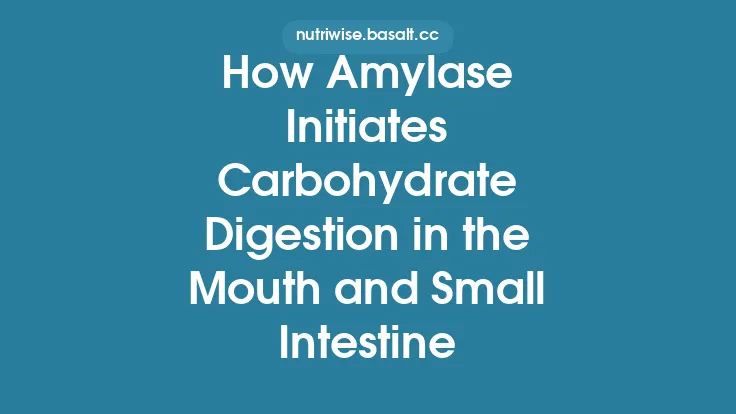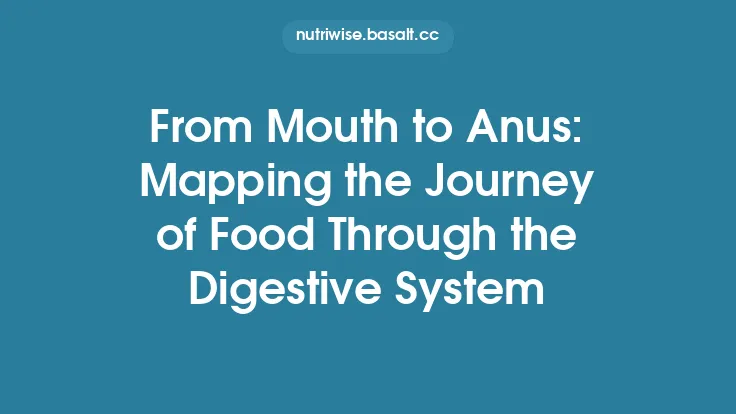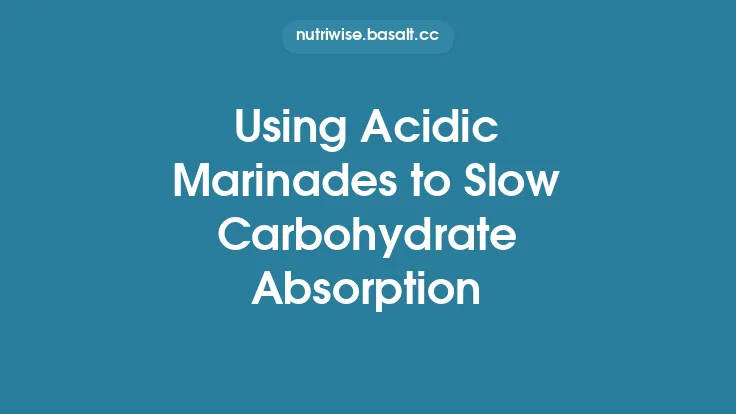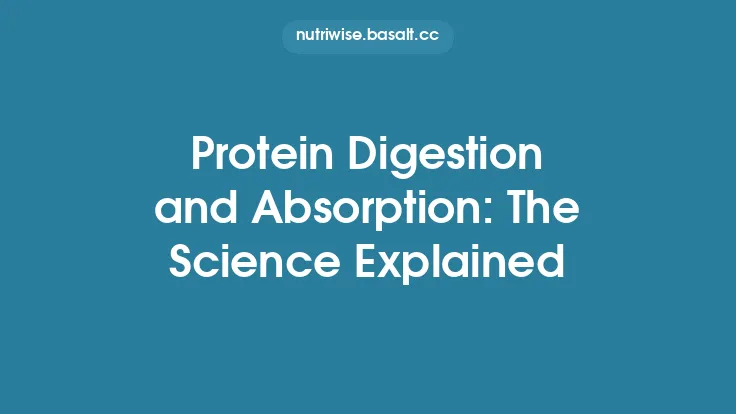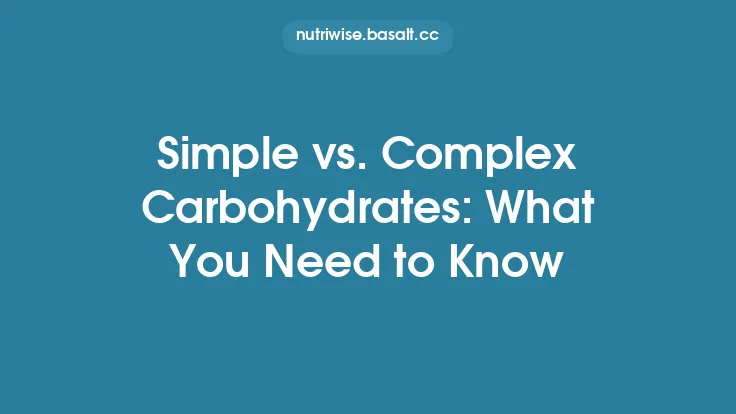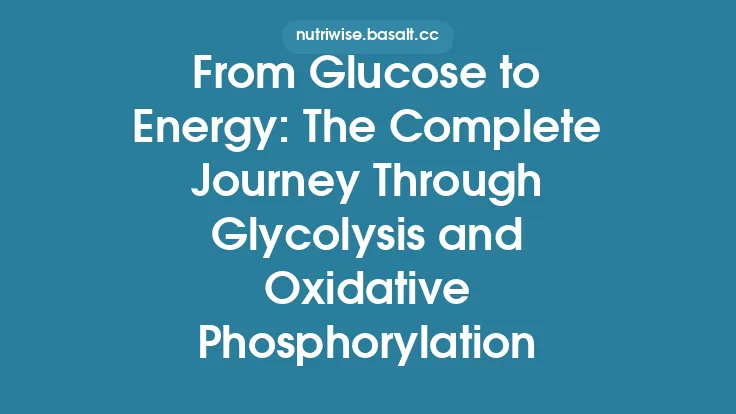Carbohydrate digestion is a coordinated, multi‑step process that transforms the complex sugars we eat into simple monosaccharides ready for absorption and use by every cell in the body. Understanding each stage—from the moment food contacts the teeth to the point where glucose enters the bloodstream—provides a solid foundation for appreciating how the body extracts energy from one of its primary macronutrients.
The Journey Begins: Oral Phase of Carbohydrate Digestion
When a bite of starchy food is taken, mechanical breakdown starts immediately. The teeth grind the food into a bolus, increasing surface area and mixing it with saliva. Saliva is more than a lubricating fluid; it contains the enzyme salivary amylase (also called ptyalin), which initiates the chemical breakdown of polysaccharides such as starch and glycogen. The oral cavity’s neutral pH (≈6.7–7.0) provides an optimal environment for this enzyme to act, cleaving α‑1,4‑glycosidic bonds and producing shorter chains called dextrins, maltose, and maltotriose.
The duration of oral exposure varies with eating habits, but even a brief 30‑second chewing period can generate measurable amounts of these intermediate products. The resulting mixture, now partially hydrolyzed, is swallowed and passes through the pharynx into the esophagus.
Salivary Amylase: Enzyme Action in the Mouth
Salivary amylase is a calcium‑dependent, α‑amylase that belongs to the glycoside hydrolase family 13. Its catalytic mechanism involves a double‑displacement (retaining) reaction, where a catalytic Asp residue acts as a nucleophile and a Glu residue serves as a general acid/base. The enzyme’s active site accommodates up to three glucose units, allowing it to cleave internal α‑1,4 linkages and generate a mixture of oligosaccharides.
Key points about salivary amylase:
- Optimal pH: 6.7–7.0; activity declines sharply below pH 5.5.
- Temperature optimum: ≈37 °C, matching body temperature.
- Inhibition: The enzyme is rapidly inactivated by the acidic environment of the stomach (pH ≈ 2), which is why most of its activity is completed before gastric entry.
From Stomach to Small Intestine: Transition and pH Changes
The bolus enters the stomach, where gastric secretions (hydrochloric acid, pepsin, intrinsic factor) create a highly acidic milieu (pH ≈ 1.5–3.5). This low pH denatures salivary amylase, halting carbohydrate hydrolysis temporarily. However, the stomach does contribute mechanically by churning the bolus, further reducing particle size and ensuring a more uniform substrate for the next phase.
The partially digested mixture, now called chyme, is gradually released into the duodenum through the pyloric sphincter. The duodenal environment is carefully regulated: bicarbonate secreted by the pancreas and Brunner’s glands neutralizes gastric acid, raising the pH to ≈6.5–7.5—an optimal range for pancreatic enzymes.
Pancreatic Amylase and the Duodenal Environment
Once the pH is restored, pancreatic α‑amylase, the principal enzyme responsible for carbohydrate digestion in the small intestine, is secreted into the duodenum. Like its salivary counterpart, pancreatic amylase cleaves internal α‑1,4‑glycosidic bonds, but it operates at a higher rate and can act on a broader range of substrates, including glycogen and resistant starches that survived oral digestion.
Key characteristics:
- Molecular weight: ~55 kDa, allowing rapid diffusion through the intestinal lumen.
- Cofactors: Requires calcium ions for structural stability.
- Product profile: Generates maltose, maltotriose, and limit dextrins (short branched oligosaccharides with α‑1,6 linkages).
The activity of pancreatic amylase is modulated by hormonal signals—primarily secretin (stimulating bicarbonate secretion) and cholecystokinin (CCK, stimulating enzyme release). These hormones ensure that the enzyme reaches the intestine when the chyme is appropriately buffered.
Brush Border Enzymes: Disaccharidases and Their Specificities
The final step of carbohydrate digestion occurs at the microvillar surface of enterocytes, collectively known as the brush border. Here, a suite of membrane‑bound enzymes hydrolyzes the disaccharides produced by amylases into absorbable monosaccharides.
| Enzyme | Substrate | Products |
|---|---|---|
| Maltase (α‑glucosidase) | Maltose, maltotriose | Glucose |
| Sucrase‑isomaltase | Sucrose, isomaltose, α‑1,6 dextrins | Glucose + Fructose (sucrose) |
| Lactase (β‑galactosidase) | Lactose | Glucose + Galactose |
These enzymes are glycoproteins anchored to the apical membrane, with catalytic domains projecting into the lumen. Their activity is pH‑dependent, functioning best at pH ≈ 6.8–7.2, which aligns with the neutralized duodenal environment.
Absorption Mechanisms: Transporters and Co‑transport Systems
Once monosaccharides are liberated, they cross the enterocyte membrane via specific transport proteins:
- SGLT1 (Sodium‑Glucose Linked Transporter 1): A secondary active transporter that couples the uptake of glucose or galactose with Na⁺ influx (2 Na⁺ per glucose). This co‑transport exploits the Na⁺ gradient maintained by the Na⁺/K⁺‑ATPase on the basolateral membrane, allowing glucose absorption against its concentration gradient.
- GLUT2 (Glucose Transporter 2): A facilitative transporter located on the basolateral membrane that permits passive diffusion of glucose, galactose, and fructose into the interstitial fluid. Under high luminal glucose loads, GLUT2 can be transiently inserted into the apical membrane to increase absorptive capacity.
- GLUT5: Primarily responsible for fructose uptake via facilitated diffusion on the apical side.
The coordinated action of these transporters ensures rapid and efficient transfer of monosaccharides from the intestinal lumen into the portal circulation.
Portal Circulation: Delivery to the Liver
Absorbed monosaccharides enter the hepatic portal vein and are transported directly to the liver. The liver acts as a central hub for carbohydrate metabolism, performing several key functions:
- First‑pass clearance: Approximately 50% of dietary glucose is taken up by hepatocytes during the post‑prandial period.
- Glycogen synthesis: Excess glucose is polymerized into glycogen via glycogenesis, mediated by glucokinase and glycogen synthase.
- Gluconeogenesis regulation: When glucose availability is low, the liver can generate glucose from non‑carbohydrate precursors, but during digestion, this pathway is suppressed by insulin signaling.
The liver’s ability to buffer blood glucose levels is essential for maintaining homeostasis, especially during the transition from the fed to the fasted state.
Metabolic Fates of Glucose in the Body
After passing through the liver, glucose enters the systemic circulation, raising plasma glucose concentrations. Insulin, secreted by pancreatic β‑cells in response to elevated glucose, orchestrates the distribution of glucose to peripheral tissues:
- Skeletal muscle: Utilizes glucose for immediate ATP production via glycolysis and stores excess as glycogen.
- Adipose tissue: Converts glucose to fatty acids for triglyceride synthesis when energy intake exceeds demand.
- Brain: Relies heavily on glucose as its primary fuel; glucose transport across the blood‑brain barrier is mediated by GLUT1.
Cellular uptake in insulin‑responsive tissues occurs through GLUT4 translocation to the plasma membrane, a process tightly regulated by the insulin signaling cascade (PI3K‑Akt pathway).
Regulatory Hormones Influencing Digestion and Absorption
While insulin governs post‑absorptive glucose handling, several hormones modulate the digestive phase itself:
- Secretin: Released by S cells of the duodenum in response to acidic chyme; stimulates pancreatic bicarbonate secretion, protecting amylase activity.
- Cholecystokinin (CCK): Triggered by fatty acids and amino acids; promotes pancreatic enzyme secretion, including amylase, and gallbladder contraction.
- Gastric inhibitory peptide (GIP) and glucagon‑like peptide‑1 (GLP‑1): Incretin hormones released from the small intestine that enhance insulin secretion and slow gastric emptying, indirectly influencing the rate of carbohydrate delivery to the intestine.
These hormonal signals ensure that enzyme release, intestinal motility, and nutrient absorption are synchronized with the body’s metabolic needs.
Common Digestive Disorders Affecting Carbohydrate Processing
Certain pathological conditions can disrupt the normal flow of carbohydrate digestion:
- Pancreatic exocrine insufficiency: Reduced secretion of pancreatic amylase leads to incomplete starch breakdown, resulting in malabsorption and osmotic diarrhea.
- Congenital sucrase‑isomaltase deficiency: Lack of functional brush border enzymes impairs sucrose and isomaltose hydrolysis, causing gastrointestinal discomfort after ingestion of sucrose‑rich foods.
- Celiac disease: Villous atrophy diminishes brush border surface area, decreasing the activity of disaccharidases and impairing monosaccharide absorption.
- Small intestinal bacterial overgrowth (SIBO): Excess bacteria ferment unabsorbed carbohydrates, producing gas and short‑chain fatty acids that can exacerbate symptoms.
Management of these conditions often involves enzyme replacement therapy, dietary modifications, or treatment of the underlying disease to restore normal digestive capacity.
By tracing the path of carbohydrates from the moment they touch the teeth to their arrival in the bloodstream, we see a finely tuned system that blends mechanical actions, enzymatic chemistry, membrane transport, and hormonal regulation. This intricate choreography ensures that the body efficiently converts dietary carbohydrates into the glucose that fuels every cellular process.
